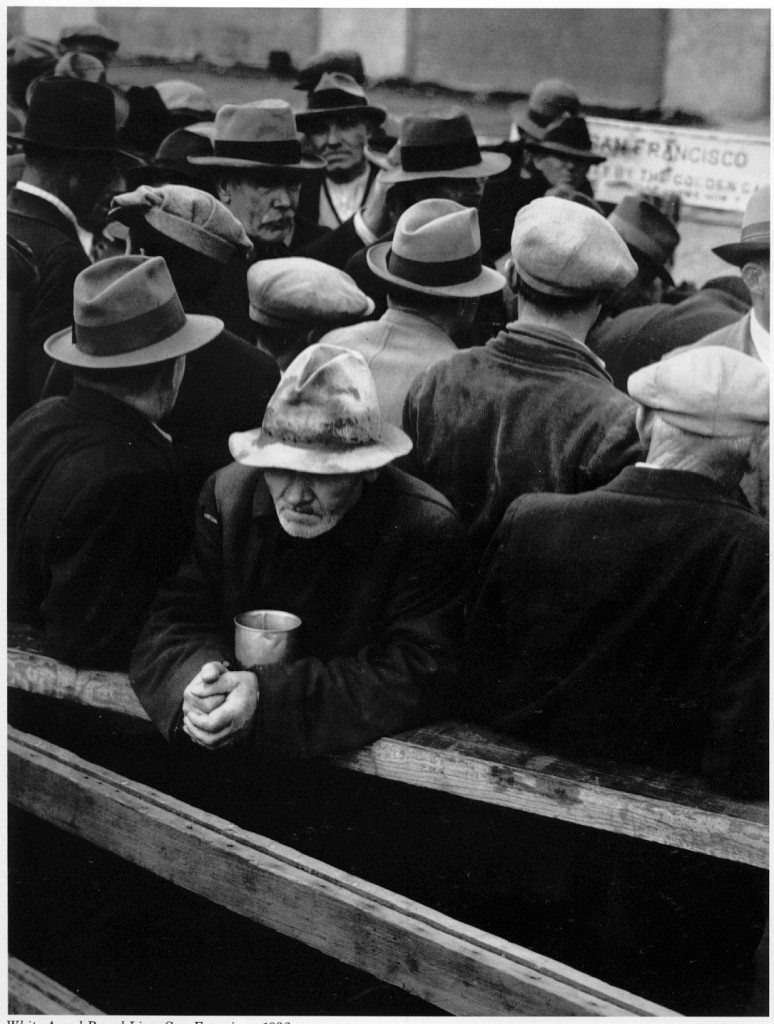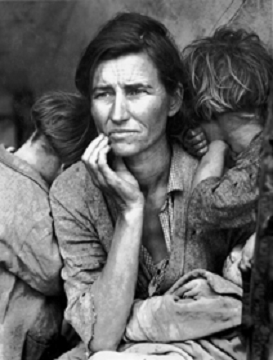|
|

|
| | | |
|
|
| | | |
|
|
Poverty and
Literature
|
| | | |
|
|
EU71
|
| | | |
|
|
Spragins
|
| | | |
|
|
Spring 2019
|
3rd
Period Even
Days; Drop Down Day 1
| | | |
|
|
| | | |
|
|
|
Second
Semester Topics:
| | | |
|
|
|
|
|
|
|
|
|
| | | |
|
|
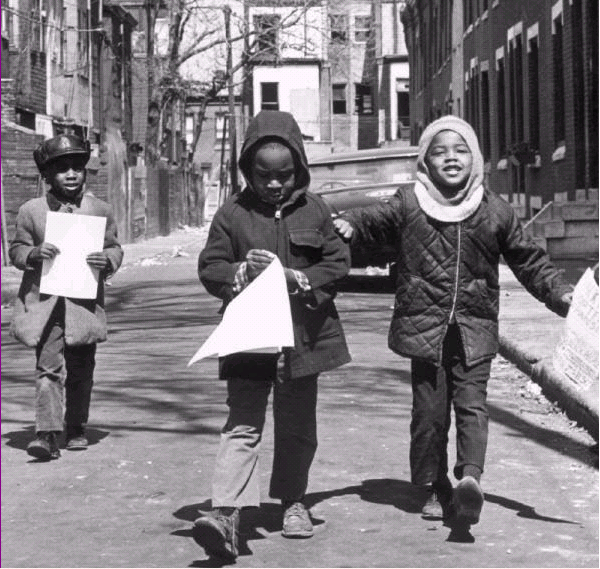
|
David
Hilfiker, MD, Urban
Injustice: How Ghettos Happen (2004)
| | | |
|

|
| | | |
|
|

|
Maggie: A
Girl of the Streets (1892)
by Stephen Crane
| | | |
|
|
|
|
 |
|
|
|
|
| | | |
|
|
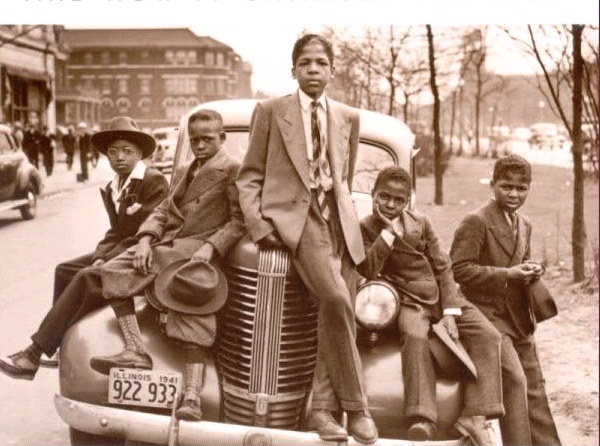
|
The Promised
Land (1991)
by Nicholas
Lemann, Clarksdale
and Chicago
| | | |
|
|

|
| | | |
|
|

Richard
Wright (1908-1960)
|
Richard
Wright, Native
Son (1940)
| | | |
| | | |  | | | | | | | | |
| | | |  | Ta-Nehesi Coates, The Black Family in the Age of Mass Incarceration (2015) | | | |
|
|

|
| | | |
| | | |  | If Beale Street Could Talk (2018)
A film by Barry Jenkins based on the 1974 novel by James Baldwin. | | | |
| | | |  | | | | |
|
|

|
| | | |
| | | | 
MICA Center for Social Design | Urban Studies Projects | | | |
|

|
| | | |
|
|
Month
|
Day
|
Cycle
|
|
Assignment
| | | |
|
|
|
|
|
|
| | | |
|
| | | |
|
|
1
|
21
|
0
|
Mon
|
Martin
Luther King, Jr. Day
| | | |
|
|
|
|
|
|
|
|
|
| | | |
|
|
1
|
22
|
5
|
Tues.
|
| | | |
|
| | | | |
|
|
|
|
1 |
23 |
|
6 |
Wed. |
|
|
|
| | | |
|
|
|
|

Boarded Row Houses in Sandtown-Winchester, Baltimore

Alejandro Aravena Pritzker Prize Winner for Architecture (2016) |
|
Google Forms Preliminary
Poll Debating
the War on Poverty Fifty Years Later:
The Heritage Foundation:: (Conservative Think Tank)
- If Poverty is the Real Problem, Then Capitalism is the Only Solution Nov 30, 2018
- Don’t Believe the UN’s Propaganda About "Extreme Poverty" in the U.S.
Jul 17, 2018 - New Statistics Show Decline in Poverty in Trump’s First Year
Jamie Bryan Hall Sep 13, 2018 - Do 5 Million Americans Really Live in Third World Poverty?
Mar 30, 2018
The Brookings Institution: (Liberal Think Tank)
- Children’s
exposure to food insecurity is still worse than it was before the Great
Recession by Lauren Bauer and Diane Whitmore Schanzenbach Friday, June
29, 2018
- Throwing money at a problem can work, but we have to count the money we spend Gary BurtlessWednesday, July 25, 2018
- Work requirements and safety net programs Lauren Bauer, Diane Whitmore Schanzenbach, and Jay ShambaughMonday, October 15, 2018
Homework:
- Urban
Injustice: How Ghettos Happen by
David Hilfiker, MD,
| | | |
|
|
1
|
24
|
7
|
Thurs.
|
| | | |
|
| | | | | | | |
|
|
1
|
25
|
8
|
Fri.
|
| | | |
|
|
|
|


Redlining in Baltimore
|
|
Hilfiker Graded Discussion due
on Wednesday, January 30th at 11:59 pm (Canvas Discussion Board)
Urban
Injustice: How Ghettos Happen by
David Hilfiker, MD
Introduction:
- What
is Hilfiker’s main
idea?
(1)
- improving poor people vs. social and historical structures
- What
do you think of his credentials?
(2)
- Define
what Hilfiker means by "the
surround". (3)
- How did Hilfiker's political
stance change over the years? (3)
- Overall Questions:
- How did the Urban Ghetto take shape from the 1880's to the 1950's?
- Despite the fact that segregation has existed throughout
American history, the truly abysmal 'modern ghetto' emerged
only
during the last fifty years. (After the Civil Rights Movement!) Why?
What happened?
Chapter One, "Building the Ghetto: A
History" (Study
Guide) (GoogleDocs
Guide Chapter One) (Hilfiker Outline)
(Blank
Guide for your note taking)
Discussion: The
Causes of Poverty:
- Macro vs.
Micro Effects;
- Intended vs.
Unintended;
- Government
Action vs. Private Action
- (Study Guide Answers)
Homework:
| | | |
|
|
1
|
28
|
9
|
Mon
|
| | | |
|
| | | | | | | |
|
|
1
|
29
|
10
|
Tues
|
| | | |
|
|
|
|
 Baltimore's Murphy Homes Housing Project Baltimore's Murphy Homes Housing Project
built in 1963

Murphy Homes Demolition (1999)
(video)
|
|
Urban
Injustice: How Ghettos
Happen
by David Hilfiker, MD Hilfiker Graded Discussion due
on Wednesday, January 30th at 11:59 pm (Canvas Discussion Board)
Homework: Conceptions of Social Justice
- Classical Liberalism:
- Radical Liberalism:
- Socialism:
| | | |
|
|
|
|
|
|
|
|
|
| | | |
|
1 |
30 |
|
1 |
Wed. |
|
|
|
| | | |
|
| | |
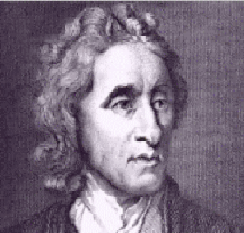
John Locke
(1632-1704)

Adam Smith (1723-1790) | | Conceptions of Social Justice:
- Classical Liberalism:
- Radical Liberalism:
- Socialism:
Homework:
 |  | | Thomas Malthus (1766-1834) | Jeremy Bentham (1748-1832) |
| | | |
|
|
1
|
31
|
2
|
Thurs
|
| | | |
|
|
|
|
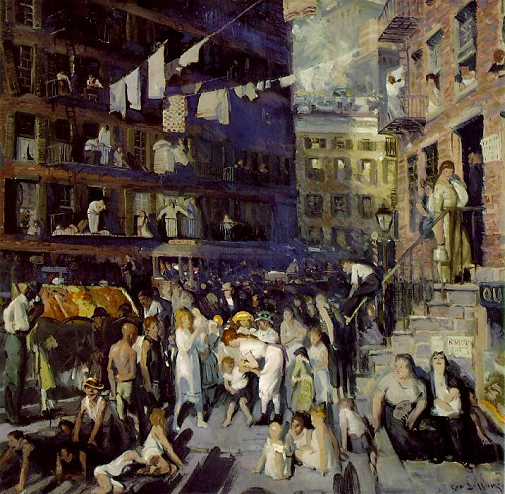
Cliffdwellers
(1913) George Bellows (high resolution)
 Jacob Riis, Mulberry Street
Jacob Riis, Mulberry Street

Jacob Riis, Bandit's Roost
|
|
Realism
vs. Naturalism
New York City 1888:
Stephen Crane:
Homework:
For further reading:
| | | |
|
|
|
|
|
|
|
|
|
| | | |
|
|
2
|
1
|
3
|
Fri
|
| | | |
|
|
|
|
| | | |
|
|
2
|
4
|
4
|
Mon.
|
| | | |
|
|
|
|
|
| Maggie:
A Girl of the Streets (part
one) Study
Guide
(Lecture One) (GoogleDocs Text) (GoogleDocs Study Guide)
Creative Project on on Maggie due Thursday 2/14 at 3:30 p.m (Quiz)
Silent Film Melodrama: The Little Matchgirl (1902);
D.W. Griffith, Way Down East (1920) starring Lillian Gish (ice flow finale)
- Setting: Describe the situation of children who grow up in the Rum Alley
ghetto.
- Plot: What can you predict will happen to the heroine in a melodrama?
- Style: Pay close attention to Crane's style: what is his perspective on his characters?
- Character:
- Smith and Malthus and Social Darwinism
- Locke's Epistemology: tabula rasa
- Hard Determinism vs. Soft Determinism
- Can you pinpoint a moment in Jimmie’s development when he
could have altered the final shape of his character?
- Can you pinpoint a moment in Maggie's development into
adulthood when she
could have altered the final shape of her character?
Part One: Chapters 1-10 - The situation of children in Rum Alley (chapters 1-3)
- Jimmie's Fate: determined or not? (chapter 4)
- Maggie and Pete: her version vs. reality (chapters 5-6)
- Two Dates: the vaudeveille show and the melodrama (chapters 6-8)
- How powerful is the shaping force of NYC culture in Maggie's mind?
- Maggie's Choice (chapter 8)
- The Curse (chapters 9-10)
- Maggie 'goes teh hell'.
- Does this choice destroy her?
Homework:
For further reading:
Bowery Boy Movies:
| | | |
|
|
|
|
 |
|
|
|
|
| | | |
|
|
2
|
5
|
5
|
Tues.
|
| | | |
|
|
|

|
|
| | | |
|
|
2
|
6
|
6
|
Wed.
|
Parent Conference Day
| | | |
|
|
|
|
 |
|
| | | |
|
|
2
|
7
|
7
|
Thurs.
|
| | | |
|
|
|
 |
|
| | | |
|
|
2
|
8
|
8
|
Fri.
|
| | | |
|
|
|
|
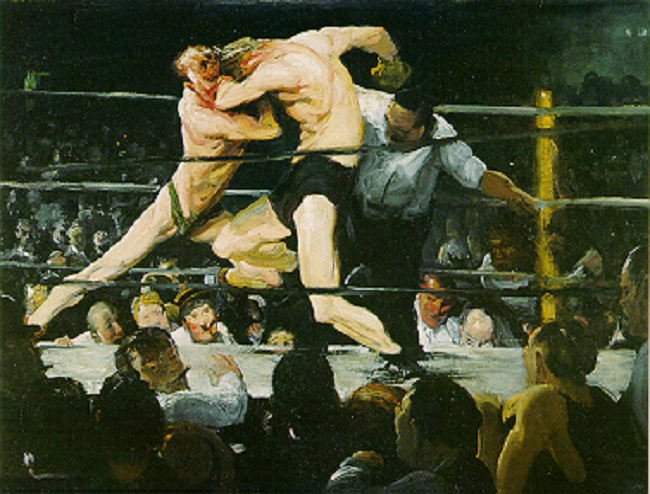 Stag at Sharkey's
(1909) George Bellows Stag at Sharkey's
(1909) George Bellows
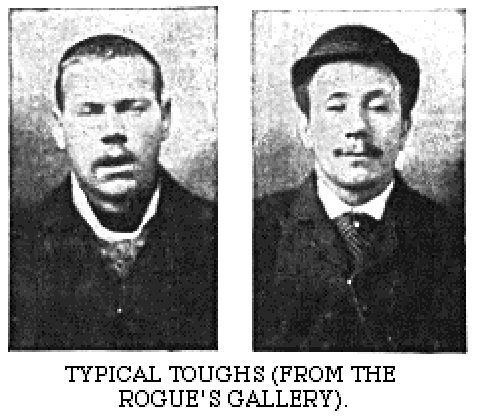
Typical Toughs
(1890) Jacob Riis
How the Other Half Lives (1890)

Henri, Salome (1909)
|
| Maggie:
A Girl of the Streets (part
two) (Quiz 2) Study Guide (Lecture)
- Why is Maggie unable to understand her situation? What obstacle blocks her? Do you hold her responsible?
Part One: Chapters 1-10 - The Situation of Children in Rum Alley (chapters 1-3)
- Jimmie's Fate: determined or not? (chapter 4)
- Maggie and Pete: her version vs. reality (chapters 5-6)
- Two Dates: the vaudeveille show and the melodrama (chapters 6-8)
- How powerful is the shaping force of NYC culture in Maggie's mind?
- Remember that Maggie is a character in a melodrama.
- Maggie's Choice (chapter 8)
- The Curse (chapters 9-10)
- Maggie 'goes teh hell'.
- Does this choice destroy her?
Part Two: Chapers 11-19
- The Bar Fight (chapter 11)
- Pete and Maggie at the 'Hall of Irregular Shape' (chapter 12)
- Maggie's Mortal Sin (chapter 13)
- What does Maggie's Mom tell the judge when she is tried for public drunkeness?
- Nell Steals Pete at the 'Hilarious Hall'
- Describe Nellie. Why is she interested in Pete?
- What does she think of Maggie?
- How does Maggie react when she is ditched?
- Return of the Prodigal Daughter (chapter 15)
- Who accosts Jimmie on the street?
- How is Maggie received by everyone in the neighborhood when she returns home?
- Pete's Struggle of Conscience (chapter 16)
- What does Pete tell Maggie when she confronts him at his bar?
- Where can she turn?
- Maggie's Descent to the East River (chapter 17)
- Nell Hustles Pete (chapter 18)
- "I allus been goo' f'ler "
- What could Maggie have learned from Nellie?
- Mag's Dead (chapter 19)
- "I kin remember when she weared worsted boots."
- "Oh, yes, I'll fergive her! I'll fergive her!"
Crane on Fate: “A
man is born into this world with his own pair of eyes, and he is not
responsible for his vision-- he is merely responsible for his quality
of personal honesty. To keep close to honesty is my supreme ambition.” Homework:
| | | |
|
|
|
|
|
|
|
|
|
| | | |
| 2 | 10 | | 0 | Sun. | | | | |
| | | |
| |
| | | |
| | | | | | | | | | | | |
|
2 |
11 |
|
9 |
Mon. |
|
|
|
| | | |
|
|
|
|
 |
|
Graded Discussion on Maggie: A Girl of the Streets due Monday night 2/11 by 11:59 p.m. |
| | |
|
|
2
|
12
|
10
|
Tues.
|
| | | |
|
| | 
Daumnier, At the Theatre (1864)

 | | Graded Discussion on Maggie: A Girl of the Streets due Monday night 2/11 by 11:59 p.m.
Creative Project on on Maggie due Friday 2/22 at 3:30 p.m
Silent Film:
- As a group, choose a key moment from the story to dramatize. (for example Maggie's impressions of her situation in the 'Hilarious Hall' (from Chapter 8).
- Go to the passage in the story which contains that key moment and do a close reading. (see Study Guide)
- Decide as a group whether you are going to interpret the scene as a hard or soft determinist.
- Storyboard a shot sequence on index cards or Post-It Notes.
- Compose the elements of each shot.
- Brainstorm costumes, props and settings.
- Choose music that would work well with your scene.
- Cast your scene.
- Be ready to shoot your scene next class.
- Use these student films as models:
Essay:
- Is Maggie responsible for her fate?
- What obstacle prevents her from understanding her situation?
- What is to be done about the situation of young people who grow up in environments like Maggie's family and neighborhood?
| | | |
|
|
|
|
|
|
|
|
|
| | | |
|
2 |
13 |
|
1 |
Wed. |
|
|
|
| | | |
|
|
|
|


|
|
Creative Project on on Maggie due Friday 2/22 at 3:30 p.m |
| | |
| | | |  | | | | | | | | |
|
|
2
|
14
|
2
|
Thurs.
|
| | | |
|
| | 
 | | Creative Project on on Maggie due Friday 2/22 at 3:30 p.m | | | |
|
|
|
|
 |
|
|
|
|
| | | |
|
|
2
|
15
|
0
|
Fri.
|
Professional Day
| | | |
|
|
|
|
 |
|
|
|
|
| | | |
|
2 |
18 |
|
0 |
Mon. |
Presidents
Day |
|
|
| | | |
|
|
|
|
 |
|
|
|
|
| | | |
|
2 |
19 |
|
3 |
Tues. |
|
|
|
| | | |
|
|
|
|
 |
|
|
|
|
| | | |
|
2 |
20 |
|
4 |
Wed. |
|
|
|
| | | |
|
|
|  Jacob Riis, 5 Cents a Spot (1890) Jacob Riis, 5 Cents a Spot (1890)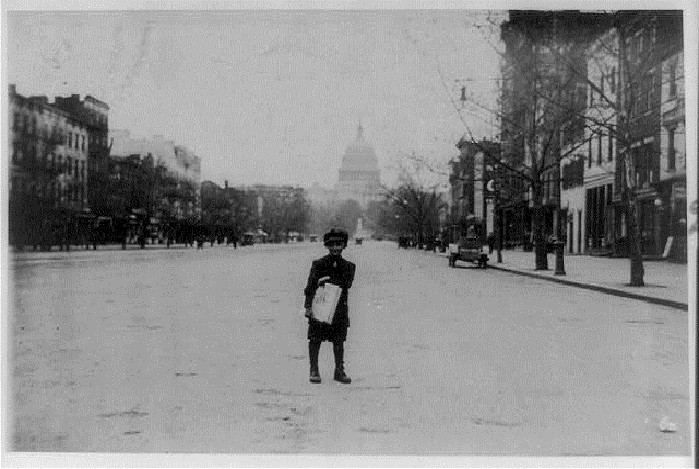
National Child Labor Committee (1905) Lewis Hines |
|
Creative Project on on Maggie due Friday 2/22 at 3:30 p.m
Photography
and Ideology:
Homework: | | | |
|
| | | | |
| | |
|
|
2
|
21
|
5
|
Thurs.
|
| | | |
|
|
|
|
|
|
| | | |
|
|
2
|
22
|
6
|
Fri.
|
| | | |
|
| | | 
McCormick-Deering
Cotton Picker (1932)
| | Creative Project on on Maggie due Friday 2/22 at 3:30 p.m
Introduction
to The
Promised Land (1991)
by Nicholas Lemann
Homework:
| | | |
| | | |  | | | | | | | | |
| 2 | 24 | | | Sun | | | | |
|
|
|
|
|
Graded Discussion: Reflection on Collaboration: Maggie Melodrama due Sunday by 11:59 p.m
| | | |
|
|
2
|
25
|
7
|
Mon.
|
| | | |
|
|
|
|

|
|
| | | |
|
|
2
|
26
|
8
|
Tues.
|
| | | |
|
| | | 
Routes of the Great Migration


Jacob
Lawrence,
"The
Great Migration: A Story in Paintings (1940-41)

Jacob
Lawrence,
"The
Great Migration: A Story in Paintings
| | Graded Discussion: The Promised Land due on Friday, March 8th by 11:59 p.m. Conceptions of Social Justice:
- Classical Liberalism:
- Radical Liberalism:
- Socialism:
Nicholas Lemann, The
Promised Land (1991)
Clarksdale
(pp 3-31) (Study
Guide) (Googledoc Guide) (Answers)
General Questions: - What
influence did the 'surround' of the segregated South have upon the
people who moved from Clarksdale to Chicago? Does Lemann believe that
‘a culture of poverty’ existed in the South?
- How does Lemann's selection of anecdotes about the folk from Clarksdale who moved to Chicago support his thesis?
- Does
Lemann’s use of these anecdotes an accurate reflection of why
concentrated poverty overtook the black neighborhoods of Chicago's
South and West Sides?
- According
to Lemann, how did the public housing debacle in Chicago develop?To
what degree does Lemann hold Mayor Daley and the city government
responsible for the coming catastrophe?
- What would Isabel Wilkerson think? How about Hilfiker and Crane?
- Identify the position on social justice that you are taking: classical liberal, radical liberal, or socialist.
Analyze why Lemann chose these people to represent the millions of African-Americans who moved north during the Great Migration:
- Ruby Daniels
- Uless Carter
- George Hicks
- Bennie Gooden
- Aaron Henry
Homework:
| | | |
|
|
|
|
|
| | | |
|
|
2
|
27
|
9
|
Wed.
|
| | | |
| | | |  | | | | | | | | |
|
2
|
28
|
10
|
Thurs.
| | | | | | | |
|
|
| |
|
Graded Discussion: The Promised Land due on Friday, March 8th by 11:59 p.m. Lemann, The
Promised Land Clarksdale
(pp, 32-58) (Study
Guide) (Googledoc Guide) (Answers) Key Questions: - What influence did the environment of the segregated South have upon the people who moved from Clarksdale to Chicago?
- Does Lemann believe that ‘a culture of poverty’ existed in the South?
- What role does the family structure have on the transmission of poverty from generation to generation?
- Would Lemann recommend government intervention to address the problems of poverty which emerged in the cities? If so, how?
- Is Lemann’s history of the Great Migration accurate?
Lemann's Answers:
Lemann's Character Selection in The
Promised Land:
Analyze why Lemann chose these people to represent the millions of African-Americans who moved north during the Great Migration:
- Ruby Daniels
- Uless Carter
- Connie Henry
- George Hicks
- Bennie Gooden
- Aaron Henry
Homework:
Check out:
The Blues Go North
| | | |
| | | |  | | | | | | | | |
|
|
3
|
1
|
1
|
Fri.
|
| | | |
| | | | 
Apartment
Building in Chicago's
"Black Belt" (LOC)

Chicago South Side Map
| | Graded Discussion: The Promised Land due on Friday, March 8th by 11:59 p.m.
Lemann, The
Promised Land Chicago (59-107) (Study Guide) (GoogleDoc Guide)

Key Questions:
How does his selection of anecdotes about the folk from Clarksdale who moved to Chicago support his thesis? According to Lemann, how did the public housing debacle in Chicago develop? - What would Hilfiker think? How about Crane?
- Chicago's Demographic Divide: see The Racial Dot Map from 2010 Census
Lemann's Character Selection in The
Promised Land:
Analyze why Lemann chose these people to represent the millions of African-Americans who moved north during the Great Migration:
- Ruby Daniels
- Uless Carter
- Connie Henry
- George Hicks
- Bennie Gooden
- Aaron Henry
Homework: | | | |
| | | |  | | | | | | | | |
| 3 | 3 | | 0 | Sun. |
| | | |
| | | |  | | | | | | | | |
|
|
3
|
4
|
2
|
Mon.
|
| | | |
|
|
| |  Robert Taylor Homes (1962)  The Robert Taylor Homes
The Robert Taylor Homes
1962- 1993

The Vice Lords at the Robert Taylor Homes
| | Graded Discussion: The Promised Land due on Friday, March 8th by 11:59 p.m.
Lemann, The
Promised Land Chicago
(59-107) (Study Guide) (GoogleDoc Guide)
Chicago's Demographic Divide
Key Questions:
- What influence did the 'surround' of the segregated South have upon the people who moved from Clarksdale to Chicago? Does Lemann believe that ‘a culture of poverty’ existed in the South?
- What role does family structure have on the transmission of poverty from generation to generation?
- Would Lemann recommend government intervention to address the problems of poverty which emerged in the cities? If so, how?
- How does Lemann's selection of anecdotes about the folk from Clarksdale who moved to Chicago support his thesis?
- Does
Lemann’s use of these anecdotes provide an accurate reflection of why
concentrated poverty overtook the black neighborhoods of Chicago's
South and West Sides?
- To what degree does Lemann hold Mayor Daley and the city government responsible for the coming catastrophe?
- Is Lemann’s history of the Great Migration accurate?
- What would Isabel Wilkerson think? How about Hilfiker and Crane?
- Identify the position on social justice that you are taking: classical liberal, radical liberal, or socialist.
Homework:
Reviews of The Warmth of Other Suns (2010) by Isabel Wilkerson's? How does she explain the emergence of the terrible ghettoes at the end of the 20th century? | | | |
| | | | | | | | | | | | |
|
3
|
5
|
3
|
Tues.
| | | | | | | |
| | | |  | | | | | | | | |
|
|
3
|
6
|
4
|
Wed.
|
| | | |
|
| | 

| | Graded Discussion: The Promised Land: Clarksdale and Chicago due on Friday, March 8th by 11:59 p.m. Lemann, The
Promised Land Chicago
(59-107) (Study Guide) (GoogleDoc Guide)Reviews of The Warmth of Other Suns (2010) by Isabel Wilkerson's? How does she explain the emergence of the terrible ghettoes at the end of the 20th century? An alternative vision: The characters chosen by Isabel Wilerson for her history of the Great Migration: The Warmth of Other Suns (2010). It includes the biographies of three persons: - Ida Mae Brandon Gladney, a
sharecropper's wife who left Mississippi in the 1930s for Chicago.
- George Swanson Starling, an agricultural worker and union organizer who left Florida for New York City in the 1940s.
- Robert Joseph Pershing Foster, a doctor who left Louisiana in the early 1950s, moving to Los Angeles.
Respond to questions as a group on the Isabel Wilkerson padlet.
What influence did the 'surround' of the segregated South have upon the people who moved north during the Great Migration? What
does Wilkerson's selection of Ida Mae, George, and Pershing to
represent the six million people who moved teach us about the character
of the Great Migration? Does Wilkerson believe that a 'culture of poverty' moved from the plantations of the South to the ghettos of the North? How does Wilkerson explain the emergence of neighborhoods of concentrated poverty in the urban ghettos? How might Lemann respond to Wilkerson's history of the Great Migration?
Homework:
| | | |
| | | | | | | | | | | | |
|
3 |
7 |
|
5 |
Thurs. |
A Raisin in the Sun at Coppin State |
| | |
|
|
|
|
 |
|
|
|
|
| | | |
|
|
3
|
8
|
6
|
Fri.
|
| | | |
| | | | 
Demolition of the Murphy Homes High Rise Project in West Baltimore (1996)
PHOTO ESSAY: Demolished: The end of Chicago’s public housing
by David Eads and Helga Salinas photos by Patricia Evans (2014)

From Bronzeville to Clybourne Park:
the Younger family's move.
Scenes from The Wire (2004-08)
| | Graded Discussion: The Promised Land: Clarksdale and Chicago due on Friday, March 8th by 11:59 p.m.
Graded Discussion Questions:
- What influence did the 'surround' of the segregated South have upon the people who moved from Clarksdale to Chicago?
- What role does ‘a culture of poverty’ have on the transmission of poverty from generation to generation?
- Would Lemann recommend government intervention to address the problems of poverty which emerged in the cities? If so, how?
- Does
Lemann’s use of anecdotes about the migrants from Clarksdale to Chicago provide an accurate reflection of why
concentrated poverty overtook the black neighborhoods of Chicago's
South and West Sides?
- To what degree does Lemann hold Mayor Daley and the city government responsible for the coming catastrophe?
- Is Lemann’s history of the Great Migration accurate?
- What would Isabel Wilkerson think? How about Hilfiker and Crane?
- Identify the position on social justice that you are taking: classical liberal, radical liberal, or socialist.
Backgrounds to
Richard Wright
Homework:
For further reading:
| | | |
| | | |  | | | | | | | | |
|
|
3
|
11
|
7
|
Mon.
|
| | | |
|
|
|

|
|
| | | |
|
|
3
|
12
|
8
|
Tues.
|
| | | |
|
|
|

Richard
Wright (1908-1960)

The Skywriter
 Bigger Meets Mary Bigger Meets Mary

The Night Ride
|
|
Graded Discussion: The Trial of Bigger Thomas due Friday March 15th by 11:59 p.m. James Baldwin, "Everybody's
Protest Novel" from Notes
of a Native Son (1948)
Wright, Native Son,
Book
One: "Fear" (Study Guide) (Quotes) (Discussion)
- Saturday
Morning in the
Thomas’ Apartment (3-12)
- The Kitchenette
Apartment
- The Rat
- The Situation of the
Thomas Family
- On
the Street (12-22)
- Symbol:
The Poster and the Skywriter
- The
feeling in Bigger's Gut
- Bigger
and Gus Playing Generals
- The
Pool Hall
(22- 29)
- Blum's
Delicatessen
- The
Vicious Cycle of Bigger's Thinking
- At The
Movies (29-34)
- The
Surreal Newsreel
- Fantasizing
about Jan and Mary
- Terrorizing
Gus (34-41)
- Why
does Bigger attack Gus?
- What
is the relationship between racism and Black on black violence"
- Can
Bigger process what he has done?
- The
Interview (42-51)
- The
Gun
- What
does Bigger think off this job opportunity?
- What
role does Bigger play during the interview?
- Mary, Peggy
and the Blind Woman (51-62)
- How
does Bigger respond to meeting Mary?
- What
makes encounters with Mrs. Dalton so eerie?
- The Night
Ride with Mary and Jan (62-80)
- What
is so wrong about the way Mary and Jan treat Bigger?
- Why
is Bigger humiliated at Ernie's Chicken Shack?
- How
demeaning is it for Bigger to 'chauffeur' Mary and an around the Park?
- Bigger
and Mary
Stumble Towards Bed (80-87)
- What conflicting feelings possess Bigger as he
helps Mary to bed?
- Could Bigger have done anything differently?
- The
Furnace (87-93)
- Note
the ways that Wright imbues this scene with horror.
Homework:
| | | |
| | | | | |
| | | |
|
|
3
|
13
|
9
|
Wed.
|
| | | |
|
|
|
|
|
|
| | | |
|
|
3
|
14
|
10
|
Thurs.
|
| | | |
| | | | 
Bigger and Gus

The Night Ride  The Drive Way  The Bedroom | | Wright,
Native
Son, Book
One: "Fear" (Study Guide) (Quotes) (Discussion) Graded Discussion: The Trial of Bigger Thomas due Friday, March 15th by 11:59 p.m. When is punishment is justified?
- Did the perpetrator intend to commit the crime? (intention)
- Did he understand what he was doing at the moment he committed the crime? (knowledge)
- Did he have any other option? (control)
QUESTION ONE:
What charge should be brought against Bigger Thomas for his killing and dismembering of Mary Dalton?
- First-degree murder: any intentional murder that is willful and premeditated with malice aforethought.
- Felony murder: a charge that may be filed against a defendant who is
involved in a dangerous crime where a death results from the crime] is
typically first-degree.
- Second-degree murder: any intentional murder with malice aforethought, but is not premeditated or planned in advance.
- Voluntary manslaughter: sometimes called a crime of passion murder, is
an intentional killing that involves no prior intent to kill, and which
was committed under such circumstances that would "cause a reasonable
person to become emotionally or mentally disturbed".
- Involuntary manslaughter: a killing that stems from a lack of intention
to cause death but involving an intentional or negligent act leading to
death. The killer did not intend for death to result from their intentional actions.
QUESTION TWO:
What combination of the principles of punishment should be used to determine a just consequence for Bigger's crime?
- Retribution: Punishment is called for because the moral or legal violator deserves to be penalized.
- Deterrence: Punishment serves as an effective disincentive for the
individual and other potential criminals. The pain of punishment is
offset by the benefit for society as a whole
- Restitution: In response to this disruption of the social order, what can be done to restore the victim of a crime
- Rehabilitation: What can be done to restore the offender to a situation of pro-sociality?
QUESTION THREE:
To what extent is inner city violence directly related to the psychological effects of systemic racism?
| | | |
| | | |  | | | | | | | | |
|
|
3
|
15
|
1
|
Fri.
|
| | | |
|
| | | | Graded Discussion: The Trial of Bigger Thomas due Friday March 15th by 11:59 p.m. | | | |
|
|
|
|
 |
|
|
|
|
| | | |
|
3 |
16 |
|
0 |
Sat. |
SPRING BREAK
|
|
|
| | | |
|
|
|

|
|
| | | |
|
3 |
25 |
|
0 |
Mon. |
SPRING BREAK |
|
|
| | | |
|
|
|
|
 |
|
|
|
|
| | | |
|
|
3
|
26
|
2
|
Tues.
|
| | | |
|
|
|

LBJ
|
|
The War on Poverty: Helpful
Chronological Framework
Lemann, The
Promised Land Washington,
(outline)
(answers)
The
Underclass Debate:
- "The
Underclass": a group beyond the help of government
- Term
emerges in 1977-82 era
- Ken
Auletta in 1977 Time Magazine article entitled "The
American Underclass" suggested that a whole class of people
were
emerging in the decaying inner city who might be beyond the reach of any form of
help:
- Drugs,
crime, teen pregnancy, welfare spending and the breakdown of the family
combine to create a class of people who are unemployable and socially
alienated: school
dropouts, welfare moms, the passive poor, hostile street criminals, hustlers, drunks/addicts/homeless.
Homework:
| | | |
|
3 |
27 |
|
3 |
Wed. |
|
|
|
| | | |
|
|
|
 |
|
| | | |
|
|
3
|
28
|
4
|
Thurs.
|
| | | |
|
|
| | 
Ta-Nehisi Coates

Wendy Sawyer and Peter Wagner, Mass Incarceration: The Whole Pie 2019
Prison Policy Initiative March 19, 2019 | | The
Underclass Debate:
- "The
Underclass": a group beyond the help of government
- Term
emerges in 1977-82 era
- Ken
Auletta in 1977 Time Magazine article entitled "The
American Underclass" suggested that a whole class of people
were
emerging in the decaying inner city who might be beyond the reach of any form of
help:
- Drugs,
crime, teen pregnancy, welfare spending and the breakdown of the family
combine to create a class of people who are unemployable and
socially alienated: school
dropouts, welfare moms, the passive poor, hostile street criminals, hustlers, drunks/addicts/homeless.
Nicholas Lemann, The Underclass Debate from The Promised Land (1991) pp. 280-291 (Study Guide)
The Enduring Myth of Black Criminality (YouTube)
Mass Incarceration, Visualized (YouTube)
Homework:
Collaborative Class Presentations on Coates' Essay
Ta-Nehisi Coates, The Black Family in the Age of Mass Incarceration The Atlantic (2015) (Online Atlantic Article)
Chapters: “Lower-class behavior in our cities is shaking them apart.” (Julie Nina) “We are incarcerating too few criminals.” (Emily, Eleanor) “You don’t take a shower after 9 o’clock.” (Sophia, Ajee) “The crime-stained blackness of the Negro” (Khai, Calvin) "The “baddest generation any society has ever known.” (Steven, Pierce) “It’s like I’m in prison with him.” (Tyler, John) “Our value system became surviving versus living.” (Lila, Gigi) “The Negro poor having become more openly violent.” (Joy, Hamera) “Now comes the proposition that the Negro is entitled to damages" (Kiki, Abbey
| | | |
|
|
|
|
 |
|
|
|
|
| | | |
|
|
3
|
29
|
5
|
Fri.
|
End of
3rd Quarter
| | | |
|
|
|
 |
|
| | | |
|
|
4
|
1
|
6
|
Mon.
|
| | | |
|
| | | 
Daniel
Patrick Moynihan, as an adviser to President Nixon, promoted a
guaranteed minimum income for all families, in part to help unravel the
“tangle of pathology” he had famously diagnosed in his report on “The
Negro Family.” August 25, 1969.

Baltimore
police respond to a call at the Gilmor Homes, where Freddie Gray was
arrested before sustaining a fatal spinal injury in April while in
police custody. July 28, 2015.

| | Collaborative Class Presentations on Coates' Essay:
Ta-Nehisi Coates, The Black Family in the Age of Mass Incarceration The Atlantic (2015) (Online Atlantic Article)
Chapters: “Lower-class behavior in our cities is shaking them apart.” (Julie Nina) “We are incarcerating too few criminals.” (Emily, Eleanor) “You don’t take a shower after 9 o’clock.” (Sophia, Ajee) “The crime-stained blackness of the Negro” (Khai, Calvin) "The “baddest generation any society has ever known.” (Steven, Pierce) “It’s like I’m in prison with him.” (Tyler, John) “Our value system became surviving versus living.” (Lila, Gigi) “The Negro poor having become more openly violent.” (Joy, Hamera) “Now comes the proposition that the Negro is entitled to damages" (Kiki, Abbey
Homework:
Collaborative Class Presentations on Coates' Essay
Working with a partner, prepare a Google presentation on your assigned chapter from Ta-Nehisi Coates' essay The Black Family in the Age of Mass Incarceration.
Your goal is to identify the main idea in each chapter, explain how
Coates defends that idea with evidence, and then evaluate the extent to
which you agree or disagree with his assertion. (Let my study guide
questions on the GoogleDoc guide the construction of your presentation.)
Explore the validity of Coates' main idea by doing some research on your own to defend or challenge Coates' argument.
PROJECT EXPECTATIONS:
- Create a slide towards the beginning of your presentation which includes a Topic Sentence.
- Use Mr. Spragins' Prompts to help organize your presentation.
- Find the best Short Quotes from your sources to use in your presentation.
- Make In-text Citations to your sources on each slide.
- Provide Interesting Graphics (pictures, sketches, tables) to Illustrate your Presentation.
- Provide Excerpts from Videos to explain Difficult Concepts
- Second to the Last Slide: Make your Conclusion Clear.
- End Your Presentation with a Properly Formatted Works Cited Page.
Your presentation is due by 11:59 on Tuesday, April 2nd.
Please share your presentation with Mr. Spragins so that he can post it
to the project gallery. You will be presenting to the class on
Wednesday, April 3rd. | | | |
|
| |  | | | | | |
|
|
4
|
2
|
7
|
Tues.
|
| | | |
|
|
|
 |
|
| | | |
|
|
4
|
3
|
8
|
Wed.
|
| | | |
| | |

Odell
Newton’s mother, Clara, with Odell’s sister-in-law Lavenia, his brother
Tim, and his sister Jackie at Clara’s home in Maryland.
| | Project Gallery: Collaborative Class Presentations on Coates' Essay:
Ta-Nehisi Coates, The Black Family in the Age of Mass Incarceration The Atlantic (2015) (Online Atlantic Article)
Chapters: “Lower-class behavior in our cities is shaking them apart.” (Julie Nina) “We are incarcerating too few criminals.” (Emily, Eleanor) “You don’t take a shower after 9 o’clock.” (Sophia, Ajee) “The crime-stained blackness of the Negro” (Khai, Calvin) "The “baddest generation any society has ever known.” (Steven, Pierce) “It’s like I’m in prison with him.” (Tyler, John) “Our value system became surviving versus living.” (Lila, Gigi) “The Negro poor having become more openly violent.” (Joy, Hamera) “Now comes the proposition that the Negro is entitled to damages" (Kiki, Abbey)
Homework: |
| | |
| | | |  | | | | | | | | |
|
|
4
|
4
|
9
|
Thurs.
|
| | | |
|
| | | | |
| | |
|
|
4
|
5
|
10
|
Fri.
|
| | | |
| | | 

Tony Barksdale

Martin O'Malley

Marilyn Moseby
|
| Ta-Nehisi Coates, The Black Family in the Age of Mass Incarceration The Atlantic (2015) (Online Atlantic Article) (Coates' Main Ideas)
The Tragedy of Baltimore:
Homework:
POTENTIAL FINAL PROJECT TOPICS: - Urban Policing Policies: The Legacy of the War on Drugs, Broken Windows Policing, and Mass Incarceration:
- Urban Policing Practices: The Black Lives Matter Movement in My City
- Urban Policing Policies: The Fergusen Effect: Under Policing in High Crime Neighborhoods
- Criminal Justice Reform: Plea Bargaining Pros and Cons
- Criminal Justice Reform: Ending Cash Bail
- Prison Reform: Halfway Houses for Drug Rehabilitation or Job Training for Ex-Convicts
- Prison Reform: Pell Grants for Prisoners
- Prison Reform: Giving Back the Right to Vote to Felons
- Prison Reform: Reforming Sentencing Strategies for Non-Violent Drug Offenses
- Prison Reform: Ending Solitary Confinement for Minors
- Baltimore Club Music Culture (See Sound of My City: Baltimore with Tate Kobang YouTube)
 Catherine Pugh Catherine Pugh | | | |
|
|
|
|
 |
|
|
|
|
| | | |
|
|
4
|
8
|
1
|
Mon.
|
| | | |
| | | 
Erricka Bridgeford, the organizer of Baltimore Ceasefire, doing a spiritual cleanse at the site of a recent murder. | |
Graded Discussion: Black Lives Matter and the Ferguson Effect due by 11:59 p.m. tonight. Monday, April 8th
Homework:
- This week as we watch If Beale Street Could Talk, you should brainstorm a final project for this course. Please go to this page to brainstorm projects with your classmates.
| | | |
| | | |  | | | | | | | | |
|
4 |
9 |
|
2 |
Tues. |
|
|
|
| | | |
|
| | 

James Baldwin

Barry Jenkins | |
Natural Police: The Wire - Chasing the Paper Trail (video)
Final Project Brainstorm:
- This week as we watch If Beale Street Could Talk, you should brainstorm a final project for this course. Please go to this page to brainstorm projects with your classmates.
If Beale Street Could Talk (2018)
A film by Barry Jenkins based on the 1974 novel by James Baldwin.
The film If Beale
Street Could Talk is based on the 1974 novel by the great American writer James Baldwin. Baldwin was an essayist and novelist who also became a
prominent public intellectual during the 1960’s. In his essays collected in The
Fire Next Time (1962) Baldwin called out the widespread expressions of
innocence among white Americans when faced with the oppression of blacks. He
said, “It is not permissible that the authors of devastation should also be
innocent. It is the innocence which constitutes the crime.” The solution to the
problem of race in America, Baldwin believed was love: love of blacks for
whites, and both races for each other.
In If Beale Street
Could Talk
Baldwin focuse on the love which sustains a black family
through a terrible ordeal. A young couple fall in love and decide to
marry. Fonny and Tish face the familiar challenges many young
couples must overcome. Fonny wants to be an
artist, a sculptor. His parents are opposed to his dream and opposed to
his
marrying Tish. Fortunately, Tish’s family supports them both, and the
couple rents a loft in Greenwich Village and is preparing to move
in together when catastrophe strikes. Fonny is
arrested and charged with the rape of a woman. They cannot raise the
money to get
Fonny out on bail, so he is imprisoned awaiting a trial which is
postponed
again and again. Tish must find a lawyer and her family must come up
with the
money to pay his fees and the fees of any investigator who might seek
to prove Fonny’s
innocence. It is in this situation that Tish realizes that she is
pregnant. How
will her family face this daunting test. Homework: - Please read the First Chapter of If Beale Street Could Talk to get a sense of Baldwin's writing style and amazing talent.
|
| | |
| | | |  | | | | | | | | |
|
|
4
|
10
|
3
|
Wed.
|
| | | |
|
|
|
 |
|
| | | |
|
4
|
11
|
4
|
Thurs.
|
| | | |
|
| | 
 | | “Now comes the proposition that the Negro is entitled to damages" (Kiki, Abbey)
Film: If Beale Street Could Talk
Dagamawi Woubshet, How James Baldwin’s Writings About Love Evolved
The author is best known for arguing that emotional connection could help heal America’s racial divides. But his 1974 novel If Beale Street Could Talk focused instead on the bonds that held black people together. The Atlantic January 9,. 2019
Homework:
| | | |
| | | |  | | | | | | | | |
|
|
4
|
12
|
5
|
Fri.
|
| | | |
|
| |  | |
| | | |
|
4 |
15 |
|
6 |
Mon. |
| | | |
|
| | 

 | | Graded Discussion: If Beale Street Could Talk due Monday, April 15 by 11:59 p.m.
- Opinion | The plea bargain trap (Washington Post)
- Adnan Sultan, Why Innocent People Plead Guilty (TEDxFurmanU)
- Nancy Franklin, Who would confess to a murder they didn’t commit? Maybe you. (TEDxSBU)
- Adam Foss: A prosecutor's vision for a better justice system, TED Talk Feb 2016
- Dylan Walsh, Why U.S. Criminal Courts Are So Dependent on Plea Bargaining: Side effects include inordinately powerful prosecutors and infrequent access to jury trials. The Atlantic 5-2-17
- Jennifer Gonnerman, Larry Krasner’s Campaign to End Mass Incarceration New Yorker October 22, 2018 Philadelphia’s District Attorney reinvents the role of the modern prosecutor.
- Emily Bazelon, If Prisons Don’t Work, What Will? NY Times 4-5-19
The Democratic presidential candidates should look at what a growing number of prosecutors are doing to end mass incarceration. - Adam Gopnik, Who Belongs in Prison?
New Yorker 4-8-19 A truly just system must do more than protect the
rights of the innocent; it must also respect the humanity of the guilty.
- Adam Gopnik. How We Misunderstand Mass Incarceration
New Yorker 4-3-17 A new book argues that, in the effort to fix the prison
epidemic, we are addressing the wrong things and missing the true
problem.
Homework:
| | | |
|
|
|
|
 |
|
|
|
|
| | | |
|
|
4
|
16
|
7
|
Tues.
|
| | | |
|
|
|
|
 |
|
| | | |
|
|
4
|
17
|
8
|
Wed.
|
| | | |
|
| | | | | | | |
|
|
|
|
|
|
|
|
|
| | | |
|
|
4
|
18
|
9
|
Thurs.
|
| | | |
|
|
|
|
|
|
|
|
|
| | | |
|
|
4
|
19
|
0
|
Fri.
|
GOOD
FRIDAY/PASSOVER
| | | |
|
|
|
|
|
|
|
|
|
| | | |
|
4 |
22 |
|
0 |
Mon. |
PROFESSIONAL DAY |
|
|
| | | |
|
|
|
|
|
|
|
|
|
| | | |
|
|
4
|
23
|
10
|
Tues.
|
| | | |
|
| | | | | | | |
|
|
|
|
 |
|
|
|
|
| | | |
|
|
4
|
24
|
1
|
Wed.
|
| | | |
|
| | | | |
| | |
| | | | | | | | | |
|
|
4
|
25
|
2
|
Thurs
|
| | | |
| | | | | | | | | |
| | | | | | | | | |
|
4 |
26 |
|
3 |
Fri. |
|
|
|
| | | |
|
| | | | 2016 Urban Studies
Projects |
| | |
|
|
|
|
 |
|
|
|
|
| | | |
|
|
4
|
29
|
4
|
Mon.
|
AP's
| | | |
|
| | | | | | | | |
|
|
|
|
|
|
|
|
|
| | | |
|
4 |
30 |
|
5 |
Tues |
AP's |
|
|
| | | |
|
|
5
|
1
|
6
|
Wed.
|
AP's
| | | |
|
| |
| | MICA Urban Design Preentation:
Directions:
- Prepare
a report (presentation) in which you describe how the following social
entrepreneurs are making a difference in their communities.
- As part of your presentation, list the kind of projects each of the following groups have sponsored.
- Try to find video to include in your presentation.
Social Entrepreneurs: | | | |
|
|
|
|
|
|
|
|
|
| | | |
|
5 |
2 |
|
7 |
Thurs. |
AP's |
|
|
| | | |
|
|
|
|
|
| | | |
|
|
5
|
3
|
8
|
Fri.
|
AP's
| | | |
| | | 
Theaster Gates
Artist Theaster Gates Turns Chicago’s Empty Spaces into Incubators for Culture (PBS Newshour 4-26-16) | | Presentations on Social Entrepreneurship:
Homework:
Begin Work on Social Entrepreneurship Projects | | | |
|
|
|
|
|
|
|
|
|
| | | |
|
5 |
6 |
|
9 |
Mon. |
AP's |
|
|
| | | |
|
|
|
|
|
|
 |
|
|
| | | |
|
|
5
|
7
|
10
|
Tues.
|
AP Exams
| | | |
| | | |  | | Work on Social Entrepreneurship Projects | | | |
|
|
|
|
|
|
 |
|
|
| | | |
| | | | | | | | | | | | |
|
|
5
|
8
|
1
|
Wed.
|
AP Exams
| | | |
|
| | | 
| | Dosomething.org
Thanks to Our Brand New App, Young People Can Make an Immediate Impact on the News That Affects Them Most
Homework:
|
| | |
|
|
|
|
|
|
 |
|
|
| | | |
|
|
5
|
9
|
2
|
Thurs.
|
AP Exams
| | | |
|
| |  | | Final Presentations:
Social Entrepreneurship Projects:
| | | |
|
|
5
|
10
|
3
|
Fri.
|
AP Exams | | | |
|
| | | | | | | |
|
|
|
|
|
 | | | |
|
|
5
|
13
|
4
|
Mon.
|
AP Exams
| | | |
|
|
| | | | | | | |
|
|
|
|
|
| | | |
|
|
|
|
|
|
|
|
|
| | | |
|
|
5
|
14
|
5
|
Tues.
|
AP EXAMS
| | | |
|
|
|
|
|
|
| | | |
|
|
|
|
|
|
 |
|
|
| | | |
|
|
5
|
15
|
6
|
Wed.
|
AP EXAMS
| | | |
|
|
|
|
|
| | | |
|
|
|
|
|
|
|
|
|
| | | |
|
|
5
|
16
|
7
|
Thurs.
|
SENIOR
EXAMS
| | | |
|
|
|
|
|
|
| | | |
|
|
5
|
17
|
8
|
Fri.
|
SENIOR EXAMS
| | | |
|
|
|
|
|
|
| | | |
|
|
|
|
|
|
|
|
|
| | | |
|
5 |
20 |
|
9 |
Mon |
AWARDS DAY |
|
|
| | | |
|
|
|
|
|
|
|
|
|
| | | |
|
|
5
|
21
|
10
|
Tues.
|
ENCOUNTER
BEGINS
| | | |
|
|
|
|
|
|
 |
|
|
| | | |
|
|
5
|
22
|
1
|
Wed.
|
| | | |
|
| | | | | | | | |
|
5 |
23 |
|
2 |
Thurs. |
|
|
|
| | | |
|
| | | | | | | | |
|
|
|
|
|
|
|
|
|
| | | |
|
|
5
|
24
|
3
|
Fri.
|
| | | |
|
| | | | | | | |
| | | | | | | | | | | | |
| | | | | | | | |
| | | | | | | | | | | | |
|
|
5
|
27
|
0
|
Mon.
|
MEMORIAL
DAY
| | | |
|
|
|
|
|
|
 |
|
|
| | | |
|
5 |
28 |
|
4 |
Tues. |
|
|
|
| | | |
|
|
|
|
|
|
|
|
|
| | | |
|
5 |
29 |
|
5 |
Wed. |
|
|
|
| | | |
|
|
|
|
|
|
|
|
|
| | | |
|
5 |
30 |
|
6 |
Thurs. |
READING DAY |
|
|
| | | |
|
|
|
|
|
|
|
|
|
| | | |
|
|
5
|
31
|
7
|
Fri.
|
EXAMS
| | | |
|
|
|
|
|
|
|
|
|
| | | |
|
|
6
|
3
|
8
|
Mon.
|
EXAMS
| | | |
|
|
|
|
|
|
|
|
|
| | | |
|
|
6
|
4
|
9
|
Tues.
|
EXAMS
| | | |
|
|
|
|
|
| | | |
|
6 |
5 |
|
10 |
Wed. |
EXAMS |
|
|
| | | |
|
|
|
|
|
|
| | | |
|
|
6
|
6
|
1
|
Thurs.
|
EXAM MAKEUP DAY
| | | |
|
|
|
|
|
|
|
|
|
| | | |
|
6 |
7 |
|
2 |
Fri |
FACULTY MEETINGS |
|
|
| | | |
|
|
|
|
|
|
|
|
|
| | | |
|
6 |
8 |
|
|
Sat. |
Baccalureate |
|
|
| | | |
|
|
|
|
|
|
|
|
|
| | | |
|
6 |
9 |
|
|
Sun. |
Graduation
|
|
|
| | | |






















































































































